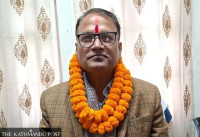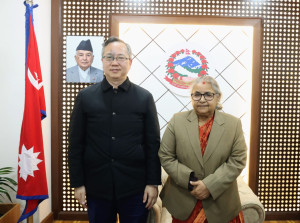National
NEA decides to sign PPAs for 1500MW non-storage projects
Power monopoly resumes purchase agreement signing for non-storage energy after a gap of three years.
Post Report
The Nepal Electricity Authority has decided to sign power purchase agreements with the developers of run-of-the-river hydropower projects to undertake or pay modality for up to 1,500MW.
The NEA’s decision comes eight months after a Cabinet meeting ordered the power monopoly to do so.
A Cabinet meeting in June had decided to open the door for PPA signing for 1,500MW energy between the state-owned utility and power developers amid constant pressure from the private sector.
Based on the Cabinet decision, the NEA’s 930th board meeting chaired by Deputy Prime Minister and Minister for Energy, Water Resources and Irrigation Rajendra Lingden on Thursday decided to sign PPAs with the developers depending on the date of grid connectivity agreement.
As of February 1, the NEA has signed connection agreements with 136 projects for a combined capacity of 3,192MW.
The authority said that the developers would receive Rs8.40 per unit in the dry season and Rs4.80 in the wet season as per the existing policy.
The NEA had halted PPA signing with the developers of the run-of-the-river type projects for the last three years owing to the financial risks for the NEA for buying more power in the rainy season. Last wet season (June-November), there was a spillage of power due to relatively low domestic consumption and inadequate access to the Indian market.
NEA expects the developers to take 5–7 years to complete the projects.
“Till that time, there will be an increase in domestic consumption of electricity and there are indications that Indian and Bangladeshi markets will also open for Nepal’s electricity exports,” Kul Man Ghising, managing director of the NEA, said according to the statement. “That’s why the decision to sign the PPA was taken.”
In 2018, the energy ministry had issued a white paper on the status of energy, water resources and irrigation and the future roadmap, setting the target of producing 1,500MW electricity in 10 years to become self-reliant on electricity. The white paper had also set the certain target of generation mix to reduce reliance on a single source of energy.
As per the target, share of the storage and pump storage hydropower projects will be 30–35 percent of total available power, share of peaking run-of-the-river type project will be 25–30 percent and run of the river type project will be 30–35 percent and alternative energy will have a share of 5-10 percent.
But a Cabinet meeting on July 8 last year had decided to amend this composition by increasing the share of run of the river type projects by 10 percent while reducing the equivalent share of reservoir projects. It means, now, the targeted share of power generated by run-of-the-river projects will be 40–45 percent while the share of reservoir type projects will be 20–25 percent. Ghising said that the NEA would continue signing PPA with run of the river projects until the cumulative 6,750MW.
With international markets opening to Nepal’s energy, the government took the calculated decision of increasing generation irrespective of whether projects fall under the run of the river type or reservoir, according to officials. Nepal can export a maximum of 408 megawatts to India and there have been efforts to export power to Bangladesh too.
Nepal’s current installed capacity is around 2200MW. Several projects with a combined capacity of 3281MW are under construction. But despite signing connection agreements with the NEA, works in 136 run of the river type projects had stalled with PPA not signed for the past three years.
NEA has so far signed PPA with several projects with a combined capacity of 6,366MW.




 9.12°C Kathmandu
9.12°C Kathmandu














